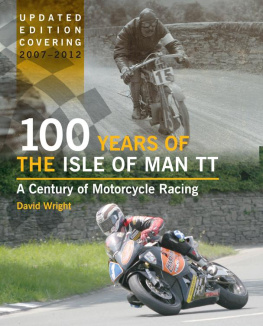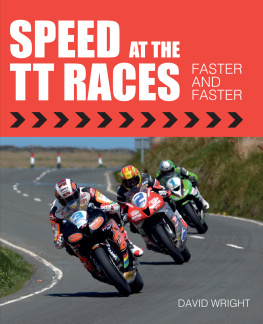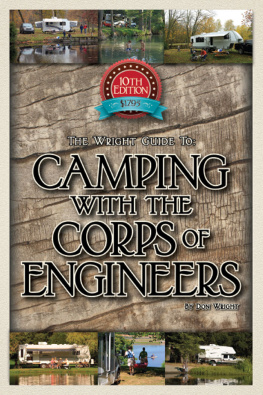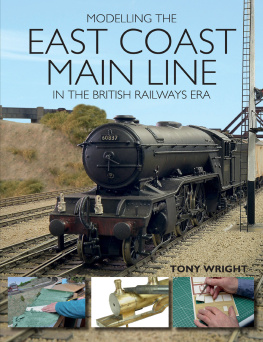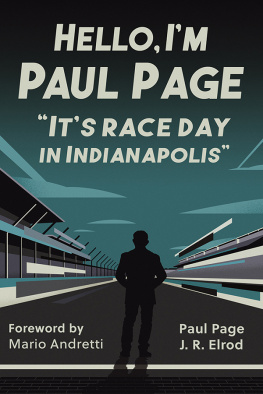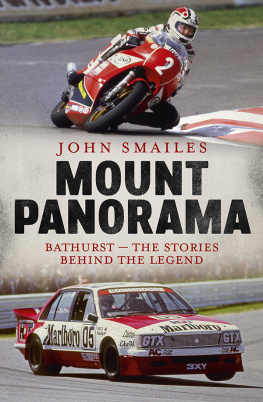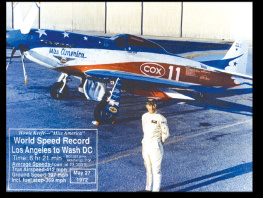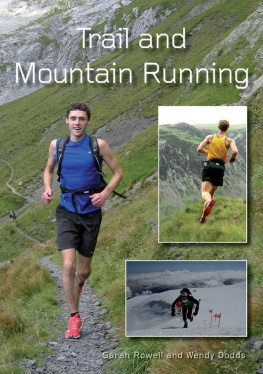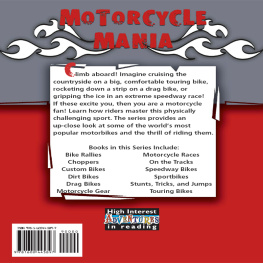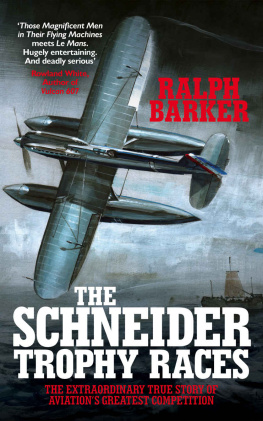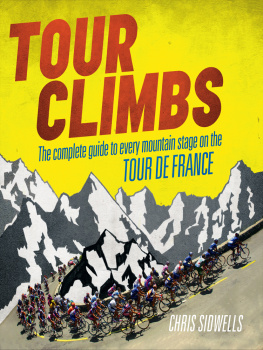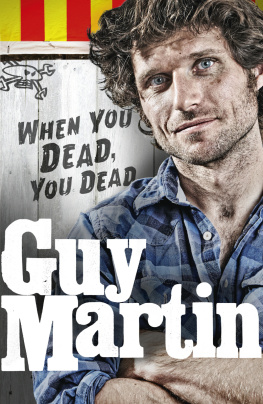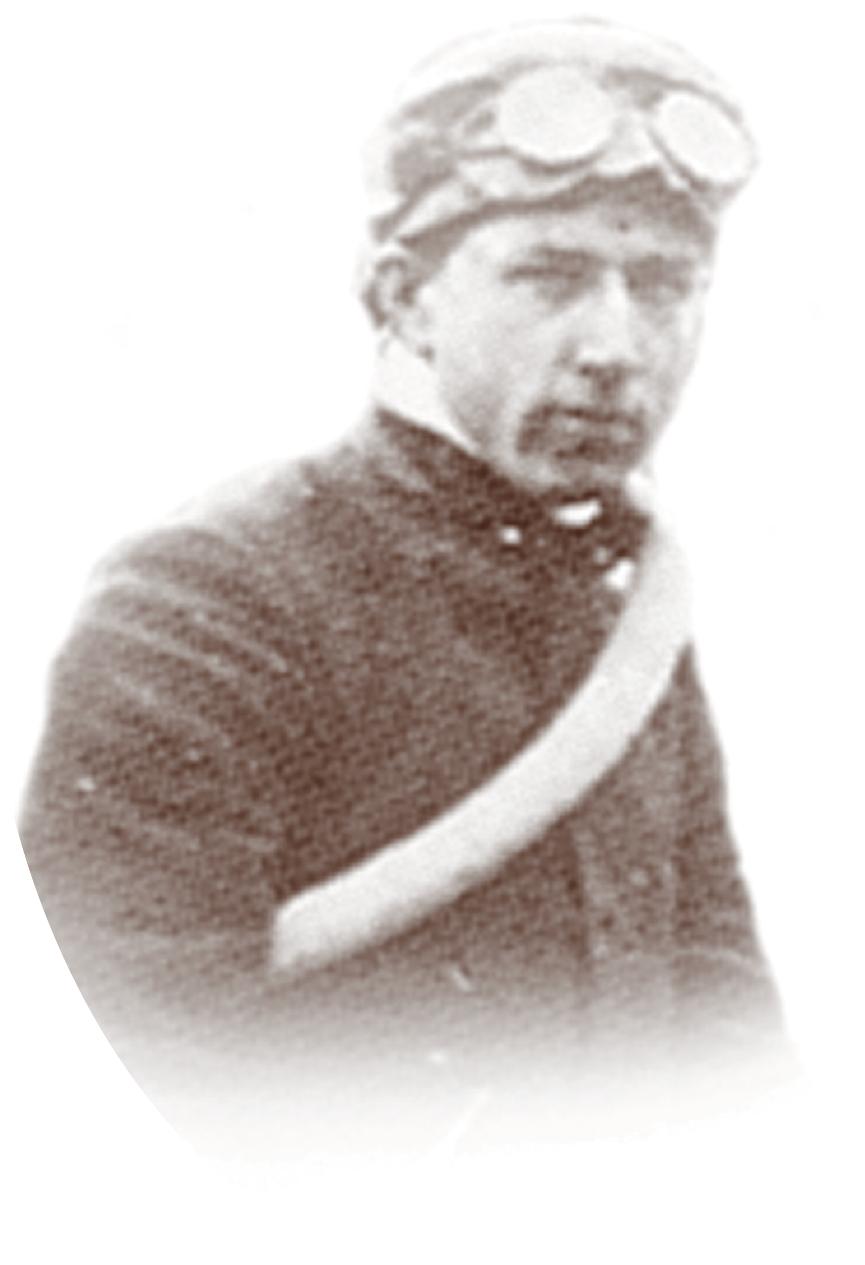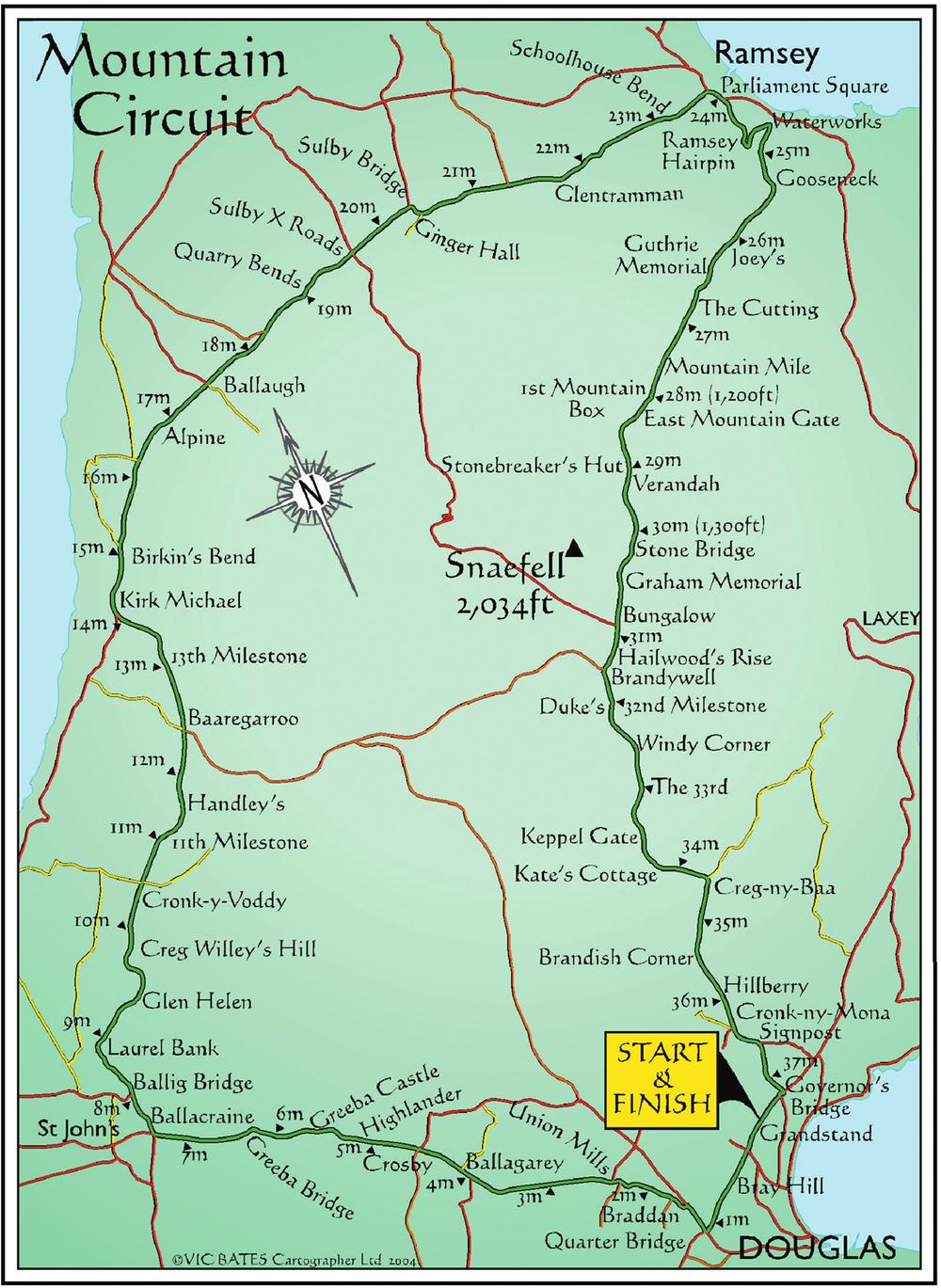First published in 2007 by
The Crowood Press Ltd
Ramsbury, Marlborough
Wiltshire SN8 2HR
www.crowood.com
This e-book first published in 2013
Revised edition 2013
David Wright 2007 and 2013
All rights reserved. No part of this publication may be reproduced or transmitted in any form or by any means, electronic or mechanical, including photocopy, recording, or any information storage and retrieval system, without permission in writing from the publishers.
British Library Cataloguing-in-Publication Data
A catalogue record for this book is available from the British Library.
ISBN 978 1 84797 648 2
Photograph previous page: Rem Fowler. (Courtesy Vic Bates)
The Isle of Man Tourist Trophy race meeting for motorcycles comprises a sporting event without parallel. For over 100 years, in early summer the islands principal roads have been dedicated to the pursuit of speed on two wheels over the world-famous 37-mile (60.75km) Mountain Course, where riders and machines are tested to their limits in front of thousands of spectators.
The TT is an important part of motorcycling history, having contributed widely to the development of almost every mechanical aspect of the motorcycles we have today, and having been contested by manufacturers from many parts of the world. British companies such as Norton, Triumph, Matchless, Rudge, AJS, Cotton, HRD, New Imperial and Excelsior competed with success, together with foreign entries from the likes of Indian, Moto Guzzi, Husqvarna, BMW, Gilera, MV Agusta, Honda, Yamaha, Suzuki, Kawasaki and Ducati. All sought the prestige associated with winning a Tourist Trophy, for an Isle of Man victory then and now says more than any amount of commercial advertising and is guaranteed to promote sales, not only for the maker of the winning machine but also for the associated suppliers of tyres, fuel, oil, brakes and so on.
For riders who achieve a TT win, it usually comes as the realization of a lifetimes ambition . It also guarantees a boost to an individual s popularity, career progress and earning power. However, competing for a Tourist Trophy has always been about meeting the challenge of pure road racing, where the nature of the course requires competitors to put aside thoughts of personal safety if they are seriously riding to win. Not all motorcycle racers are prepared to take on the challenge of the TT and some thirty-five years ago racing began the process of polarization that now sees it divided into two widely differing disciplines. On the one hand there is road racing, with its acceptance of natural hazards such as walls and kerbs, and, on the other, circuit racing that incorporates maximum run-off areas and gravel traps. Although there are still riders who happily contest both disciplines, increased specialization means that they usually choose one or the other.
The TT has developed into more than a race meeting and now advertises itself as a TT Festival. However, racing remains at the core of a fortnights two-wheeled activities, and as it reaches its centenary the customary questions will be asked about the events future. But that has been the way throughout its existence , for the TT has rarely been free from criticism and change. As always, its strength lies in the fact that riders still seek to race, organizers are still prepared to run this unique event, and the Isle of Man continues to welcome its annual presence. Whatever the outcome of todays questions and answers, nothing can erase the Tourist Trophy meetings 100 glorious years of motorcycle racing history, the highs and lows of which are captured within these pages.
The first acknowledgement should be to recognize the splendid vision of the pioneer motorcyclists who created the Tourist Trophy meeting in 1907, both as an outlet for their competitive activities and as a means of developing the early motorcycle from its primitive single-speed, belt-driven format to the sophisticated racers of today.
Amongst present-day enthusiasts for the TT who have helped with information for this book are Geoff Cannell, Bill Snelling and Paul Wright. The archives of the Manx Museum Library have also been a source of information, and the words are much enhanced by photographs supplied by Vic Bates, Ed Cawley, Ron Clarke of Manx Racing Photography , FoTTofinders, Pat East, Wolfgang Gruber, Alan Kelly of Mannin Collections, Richard Radcliffe, Ken Smith, the Vintage Motor Cycle Club and John Watterson. I am grateful to all for their assistance.
David Wright
Isle of Man
The Isle of Man was relatively slow to adopt the use of motor vehicles and fewer than fifty were registered for use on its roads in the first few years of the twentieth century. As its principal commercial activities at the time were fishing, agriculture and tourism, not even the most ardent enthusiast of the early internal combustion engine could have predicted that this largely horse-powered Crown Dependency in the middle of the Irish Sea would develop over the next century into the Road Racing Capital of the World. Rather more predictable was that, among the early users of cars and motorcycles in other parts of Britain, there were some who wished to compete against each other to see who was the fastest driver and who had the fastest machine. With an overall speed limit of 14mph (22.5km/h) on British roads in the early 1900s (rising to 20mph/32km/h in 1904), there were few opportunities for them to do so in legal fashion.
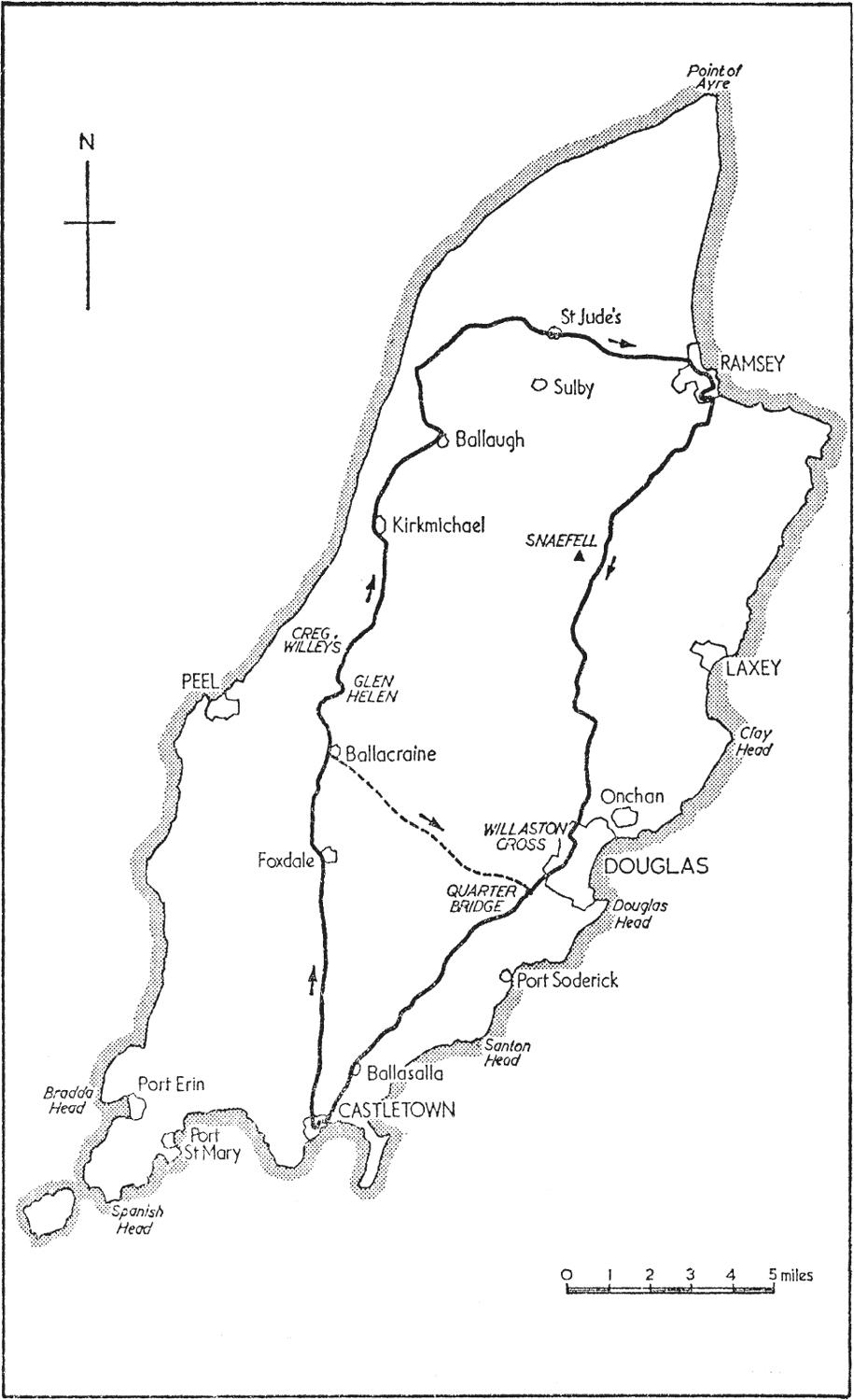
The 52-mile course used in eliminating trials for the Gordon Bennett Cup held on the Isle of Man in May 1904. Competitors covered six laps and the trials also included separate hill-climb and sprint events.
Four Wheels First
Early in 1904 the Automobile Club of Great Britain and Ireland was looking for somewhere to run eliminating trials to choose a team of drivers to contest the Gordon Bennett Cup, a prestigious car race to be held in Germany. As legislation prevented it from organizing such competition over British roads, Club Secretary Julian Orde paid a visit to his cousin Lord Raglan on the Isle of Man in February 1904, with a view to running trials for the four-wheelers over the Islands roads. Orde borrowed his cousins Daimler and set out in search of a circuit that would test machine reliability and driver skill, rather than out-and-out speed. In this he was successful, choosing some 50 miles of the principal roads linking Douglas, Castletown and Ramsey, including the particularly testing Mountain section that climbed from Ramsey to skirt the slopes of Snaefell en route to Douglas.
Amendments to Manx laws were needed before the roads could be used for racing, and Lord Raglan used his influence to speed through the required legislation in spring 1904. Haste was necessary because time was short, but not everyone agreed with the cutting of legislative corners on behalf of motorists and one member of Government expressed the view that it was undignified to hurry the measure through in such fashion.
After the considerable time and effort spent on preparations, only eleven cars came to the line in May 1904, but a large number of people turned out to watch the associated flurry of motoring activity and the event was rated a success.

